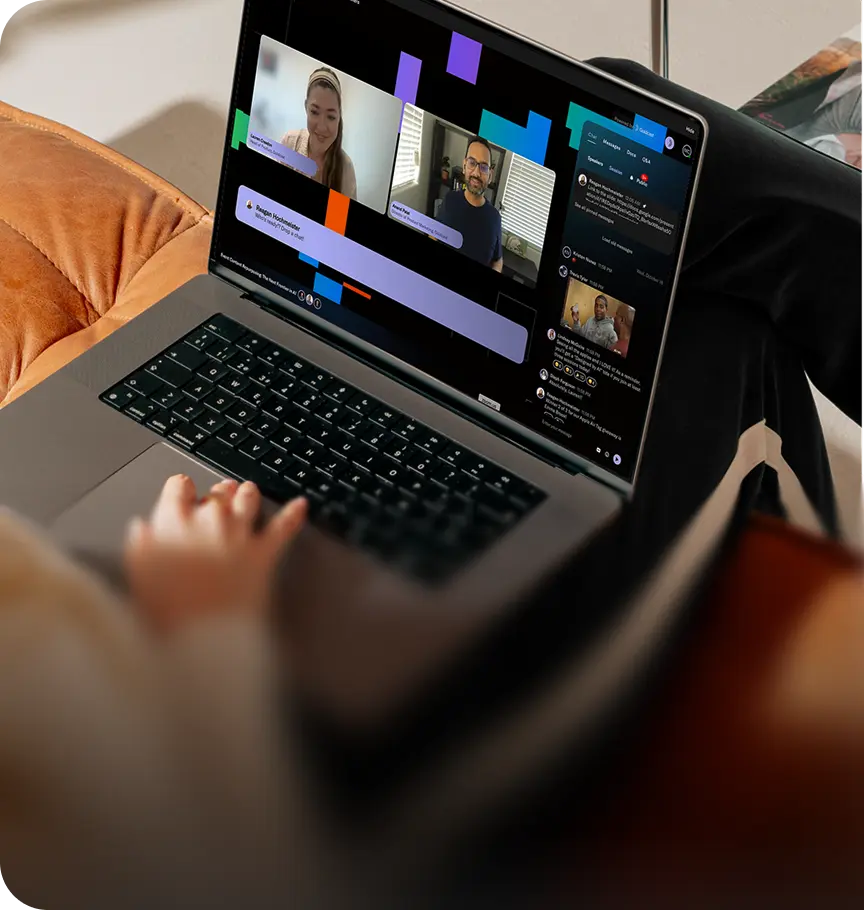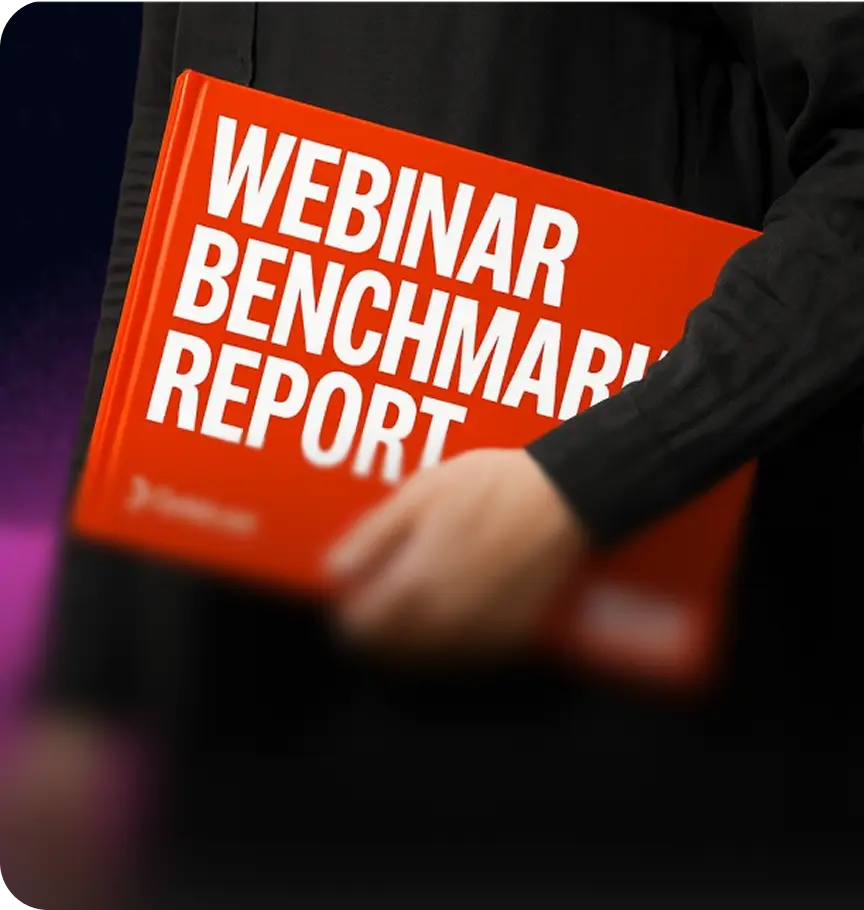Why CMOs are Ditching MQLs for Mindshare (And Winning Bigger)

Table of Contents
Maximize Your Marketing ROI
Join 10,000 other marketers already getting the best tips on running engaging events that boost pipeline and create raving fans.
For over a decade, the B2B SaaS growth formula was predictable: drive MQLs, hand them off to sales, and repeat.
But predictability doesn’t mean it’s predictably effective.
The more CMOs we talk to, the more we see them rewriting the script. Because buyers have changed, and the MQL can’t keep up.
MQLs just don’t cut it anymore
Only 1% of MQLs actually convert to revenue.
Worse? They’re usually signals from one person, not the full buying committee. In enterprise deals, that’s a fatal flaw.
Today’s buyers (often 6 to 10 stakeholders deep) are 70% through the journey before talking to sales.
If you’re not on their shortlist by then, you’re invisible. And in a world where vendor shortlists are shrinking, showing up late means you’ve already missed your chance.
"The MQL is dead, but most marketers haven't gotten the memo yet." Hear Devin Reed and Kelly Cheng unpack this controversial take—and what's replacing MQLs—in their must-watch keynote from Mindshare 2025.
Mindshare is the new battleground
Modern CMOs aren’t chasing leads. They’re earning a seat at the table before the buying process begins.
This is mindshare.
It’s the trust, reputation, and recognition that ensures your brand is recalled, before competitors are even considered.
According to research from Edelman, most decision-makers won’t even consider a vendor they’ve never heard of.
That’s why category leaders are investing in mindshare, not just intent. They're creating brands that show up early, often, and everywhere that matters.
The results? Real revenue impact
Mindshare isn’t fluff—it’s fuel.
✓ Lower CAC: Trusted brands require less convincing, making acquisition cheaper.
✓ Higher LTV: Trust compounds. Customers stick, expand, and pay premium prices.
✓ Faster sales cycles: When buyers already trust you, consensus builds faster.
Think Gong. Think Slack. Think HubSpot. These brands didn’t win on form fills. They won on familiarity.
Brand and performance, not one or the other
MQLs aren’t the enemy. They’re just the end result of mindshare done well.
That’s why the most progressive marketing leaders are embracing a 60/40 brand-to-demand split. Brand-first strategies like thought leadership, events, and video storytelling fill the funnel before intent ever surfaces—so when leads do show up, they’re already warm.
9 ways to double down on mindshare
The path from MQLs to mindshare isn't a leap—it's a strategic shift. And it starts with creating the kind of content that builds trust.
1. Map your dark funnel influence
Your best prospects are ghosting you—in a good way.
They're consuming your content, watching your videos, and talking about you in private channels. All before filling out a single form.
Catch these invisible signals:
- Branded search spikes
- Return visitors
- Private community referrals
- Content views without conversions
Tools like Dreamdata, Mutiny, and HockeyStack help connect these dots.
2. Give content away
If your content flywheel isn't spinning without gates and forms, you're missing the point of mindshare.
Stop holding your best stuff hostage. Your prospects are already drowning in gated content. Stand out by being generous.
Ungate these power players:
- Benchmark reports (yes, the ones you spent months on)
- Research studies
- Strategy guides (your actual playbook)
- Templates and frameworks
- Original research
Forms don't build trust or drive content engagement. Value does. Focus on maintaining a consistent content cadence that delivers insights worth your audience's time.
3. Elevate your internal voices
Help execs, subject matter experts, and evangelists publish consistently. These voices outperform brand channels 5:1.
LinkedIn warrior mode:
- 2-3 posts weekly, no excuses
- Mix thought leadership with real talk
- Jump into trending convos
- Share the wins, own the fails
Podcast power moves:
- Target top 3 industry shows
- Arm speakers with killer stories
- Turn episodes into social gold
Virtual stage domination:
- Own category-defining events
- Create one knockout talk
- Turn presentations into content
Personal brands = trust magnets. When your people shine, your company grows.
4. Run category-building campaigns
Own your narrative. Coin a term, drop a report, name the shift. Gong didn’t just market sales software—they invented Revenue Intelligence.
Building a category might sound daunting, but you can start with content you already have.
For example, Modern Sales Pro uses Goldcast to host nearly 180 webinars per year, achieving a 39% average attendance rate. But the real magic happens after each event.
Using AI-powered content repurposing, they transform hours of expert conversations into:
- Short-form social videos
- Blog posts
- Email newsletters
- Sales enablement content
Consistent mindshare. Multiple channels. Minimal additional effort. 💪
5. Launch serialized video-first campaigns
Micro video marketing builds rhythm and familiarity—two drivers of brand awareness and recall.
Think Netflix for B2B. Serialized content isn't just for entertainment—it's your secret weapon for staying top-of-mind.
Quick-win formats:
- Weekly industry news recaps
- Monthly expert interview series
- Customer story spotlights
- Behind-the-scenes product deep dives
- "Ask Me Anything" sessions with leadership
Whether it’s a branded show, podcast, or ongoing webinar series, Goldcast helps marketing teams build binge-worthy content that sticks.
6. Create a “minimum viable community”
Forget giant Slack groups. Start with a niche group of influencers, customers, and high-fit prospects. Think quality over quantity—20 engaged leaders beats 2,000 lurkers every time.
How to start:
- Host monthly virtual roundtables with 8-12 carefully picked participants
- Mix industry experts with your power users
- Keep discussions focused on solving real problems, not pitching
- Create "off-the-record" environments where peers can be candid
VIP meetups build the kind of trust that can’t be copied.
Record these sessions (with permission) and you've got content gold. The insights that surface in these intimate conversations are pure mindshare fuel.
7. Collaborate with trusted voices
Mindshare by association is still mindshare. Think of it as borrowing trust.
Quick wins:
- Co-create research reports with industry analysts
- Jump on trending LinkedIn threads
- Partner with complementary brands/influencers for joint webinars
- Swap podcast appearances
- Host roundtables featuring top experts
Don't just chase big names. Relevance > Reach.
8. Measure what matters
Mindshare isn’t clicks—it’s recall. Focus on metrics that capture true brand resonance:
✓ Share of Voice (SOV): Track how much of the industry conversation your brand owns.
✓ Brand sentiment: Use AI-powered tools to analyze customer feedback, social mentions, and reviews.
✓ Customer surveys: Conduct regular pulse checks to measure brand recall and recognition.
✓ Event engagement: Track not just attendance, but meaningful interactions during events that signal true connection.
The key is measuring signals that indicate mindshare growth over time, not just short-term marketing activities. Tools like SparkToro and brand lift studies can help quantify your progress.
9. Turn events into always-on content
Don’t let webinars or field events die on the calendar.
Use Goldcast to turn a single session into:
- Short-form video clips for social media
- Blog posts and articles
- Email newsletters
- Sales enablement content
- Podcast episodes
- Highlight reels for future event promotion
This is how modern marketers scale brand storytelling.
One 60-minute event can fuel weeks of multi-channel content. The key is having a systematic approach to repurposing.
Demand starts with attention
Most marketers are scrambling for scraps—fighting over the 5% of buyers actively looking to buy.
Meanwhile, category leaders are playing a different game.
They're capturing mindshare with the other 95%, becoming the obvious choice long before purchase intent kicks in.
The math is simple: Show up early. Show up often. Or don't show up at all.
Because in B2B, the shortlist is written before you even know there's a deal.
Mindshare > MQL.
That's not just a formula—it's the future.
Transform Your Video Marketing with AI
Stay In Touch
Platform
Resources
© 2025 Copyright Goldcast, Inc. All rights reserved.





 Upcoming Events
Upcoming Events Event Series
Event Series On-Demand Events
On-Demand Events

